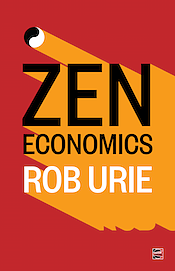The recent confirmation by the US that DU ammunition was used in two attacks in Syria in late 2015 raises a number of troubling questions.
Firstly, why was DU used? Has it been used again? Will it be used again?
Secondly, and no less important, what will happen next in order to mitigate any health or environmental risks the contaminated sites may pose?
A joint investigation by Airwars and Foreign Policy that was published earlier this week, has finally confirmed that the US used DU in Syria, and that in both cases the targets were large convoys of fuel tankers.
According to the Airwars report, CENTCOM spokesman Major Josh Jacques said that “5,265 armor-piercing 30mm rounds containing depleted uranium (DU) were shot from Air Force A-10 fixed-wing aircraft on November 16th and 22nd 2015, destroying about 350 vehicles in the country’s eastern desert.”
The admission is important because in early 2015, the US had assured reporters that DU had not and would not be used in Syria. In March 2015, Coalition spokesman John Moore said that “US and Coalition aircraft have not been and will not be using depleted uranium munitions in Iraq or Syria during Operation Inherent Resolve.”
Later that month, a Pentagon representative told War is Boring that A-10s deployed in the region would not have access to armor-piercing ammunition containing DU because the Islamic State didn’t possess the tanks it is designed to penetrate.
Following a tip off from ICBUW member the Nuclear Resister last year, Airwars’ Sam Oakford, who investigated both the latest story and the revelations published last October, approached US Central Command (CENTCOM) for confirmation. CENTCOM and the US Air Force first denied DU was fired, then offered differing accounts of what happened, before finally admitting that DU had been used.
DU … probably unnecessary for fuel tankers!
The 30mm DU ammunition used in both incidents was fired by A-10 aircraft, a platform notorious for the fact that the pilot cannot select between its DU and high explosive incendiary (HEI) ammunition once in flight. A-10s have been active in operations against Islamic State (IS) over Syria and Iraq since 2014, although this is the first time that DU’s use has been identified in the conflict.
ICBUW analysed the likely targets involved in the incidents, and was initially puzzled that they appeared to be fuel tankers, rather than armoured vehicles. The A-10’s controversial DU ammunition is justified and promoted on the basis of its perceived advantage against armoured vehicles.
However, analysis of its use in the Balkans and Iraq clearly shows that if the political or operational decision is made to deploy the aircraft armed with its standard ‘combat mix’ of DU and HEI ammunition, A-10s will attack a far wider range of targets of opportunity. It is standard practice for combat mix to be available for A-10 deployments in active conflict zones, even if it ultimately isn’t used.
In the case of Syria, a decision appears to have been made during planning for the two operations against the fuel convoys that DU was needed, to ensure what a CENTCOM spokesperson said was a: “higher probability of destruction for targets.”
The first strike on November 16 would see 1,490 DU rounds used – equating to 432kg of DU; the second, on November 22 saw 3,775 rounds used – some 1,095kg of DU. Bombs, rockets and missiles were also used in the two strikes which, according to CENTCOM, destroyed 116 and 283 fuel tankers respectively.
The same CENTCOM spokesperson later explained to the Washington Post that: “U.S. forces wanted to ensure that trucks would be rendered completely inoperable“, and that DU, rather than HEI rounds were the best way to achieve that. While DU rounds would doubtless have the desired effect against fuel tankers it is highly questionable that HEI wouldn’t also have achieved these aims.
Ironically enough, General Dynamics, one of the manufacturers of the A-10’s 30mm ammunition family states that the HEI round: “Provides fragmentation and incendiary effects for use against personnel, trucks, ammunition storage, and many other targets.”
DU may not yet be banned – but it is deeply stigmatised
The use of DU weapons, while not explicitly banned by a treaty, has been deeply stigmatised since at least the turn of the century, if not earlier.
Therefore for military planners, it was not just a calculation over the efficacy or otherwise of the A-10’s DU ammunition, but also a matter of international public perception, particularly as they were, and are, acting as part of a coalition of nations, many of whom have made their opposition to the weapons clear on a number of occasions.
For a conflict as politicised as Syria, it seems only logical that public perception and scrutiny must also have factored into the US’s calculus. The media and public’s response to the latest Syria revelations indicate that this may have been underestimated, as may the propaganda coup disclosure would provide for IS, and for Russia and its media outlets.
In a statement circulated by the Tass press agency this week, a spokesperson for the Russian Foreign Ministry said of the US’s recent and historical use of DU: “Amid the anti-Syrian and anti-Russian propaganda campaign and in the context of successful operations by the Syrian armed forces with support from Russia’s aerospace group against terrorists and militants in Aleppo, such facts of recent history are ignored by Western mass media.”
It was a moot point that the news had broken a week after Russia’s state nuclear supplier Rosatom announced that it would be supplying the DU ammunition for Russia’s new Armata tank.
As to whether the US intends to use DU again in Syria, or indeed in Iraq – in spite of the latter’s 2014 call for a global treaty ban on the weapons, CENTCOM appears to have now returned to the policy position it had prior to promising not to use DU in early 2015, with its spokesperson refusing to “rule out“ its future use.
Those coalition partners who don’t support DU use, or that view it as an easy propaganda win for IS and Russia, should use their influence with the US to urge restraint. Meanwhile CENTCOM should clarify its DU policy for the operation, particularly over whether it will use DU on Iraqi territory, or restrict its use to Syria.
What will happen to the contaminated sites?
Whether you take domestic or international radioactive waste management standards as a guide, the recommendations of international organisations, or the past practice of states affected by DU contamination, the consensus is that post-conflict measures need to be implemented to mitigate the risks that contamination can pose to human health and the environment.
The first priority is to identify contaminated sites. This can be challenging under normal conditions as the presence of DU can usually only be verified through a ground survey. This has often been complicated by the fact that state users of DU, such as the US, have been historically reluctant to share strike data and coordinates with international organisations or national authorities.
In the case of the two Syrian strikes, the number of vehicles destroyed, the video footage and their rough locations could prove sufficient for them to be geolocated from satellite images before any ground survey is undertaken.
Once identified, the sites should be marked and isolated. For example Serbia’s military proved adept at identifying, marking and fencing A-10 strike sites from the conflict in 1999. For Syria, the affected areas remain under the control of IS at the time of writing, and it seems unlikely that marking and fencing can be expected under the circumstances.
The risks posed by DU are typically specific to the location, its land use and the pathways through which people may be exposed. For the Balkans and Iraq, a limited number of DU-affected sites were assessed by UN agencies such as UNEP and the IAEA, with recommendations provided to the national authorities on subsequent monitoring and clearance work.
And what about the next time … ?
The outcome of the Syrian conflict will strongly influence the likelihood of whether a formal UN-led post-conflict assessment funded by the international community takes place; should Assad remain in power, an assessment of this type seems extremely unlikely.
Assuming that the Syrian government regains control of the affected sites from IS, the burden of clearance will fall on them. Although CENTCOM told the Washington Post that: “the locations where they were used in November 2015 have been marked for clean-up in the future“, this is ultimately meaningless in the context of DU, where there are currently no formal obligations on either user or affected state to conduct clearance operations.
Should Syria end up with a pro-Western regime, perhaps one day there might be support for some clearance programmes; in all likelihood just some surface clearance of DU fragments in the context of explosive remnants of war removal: nothing to address the contaminated soils at the sites.
Should Syria end up with a pro-Russian regime, then perhaps Moscow will live up to its public opposition to DU munitions and provide the technical and financial assistance required. But what will be left if and when this happens?
If Iraq is anything to go by, the remains of the 400 or so oil tankers may have been cut up, dragged off and recycled for scrap by then – exposing workers to DU particulate at every stage of the process.
Whoever thought of voluntary restraint?
Whatever the outcome of the war, DU contamination is now just one of many forms of environmental damage and toxic remnants of war, caused or exacerbated by the conflict.
When it ends, the environment is unlikely to be a priority for anyone, be they donors or the new authorities, and it is Syria’s communities and environment that will pay the cost. Obligations for the post-conflict management of DU contamination are urgently required – but thus far are not something the international community has sought to pursue.
But it’s not just a matter of clearance obligations – it is also a matter of restraint. It is one thing to fire DU for the sake of a tenuous military advantage. It is quite another to do so when the chances that the toxic residues of uranium munitions will ever be dealt with appropriately are so remote.
Doug Weir Coordinates the International Coalition to Ban Uranium Weapons, ICBUW campaigns for a ban on the use of uranium in all conventional weapons and weapon systems and for monitoring, health care, compensation and environmental remediation for communities affected by their use. @ICBUW











